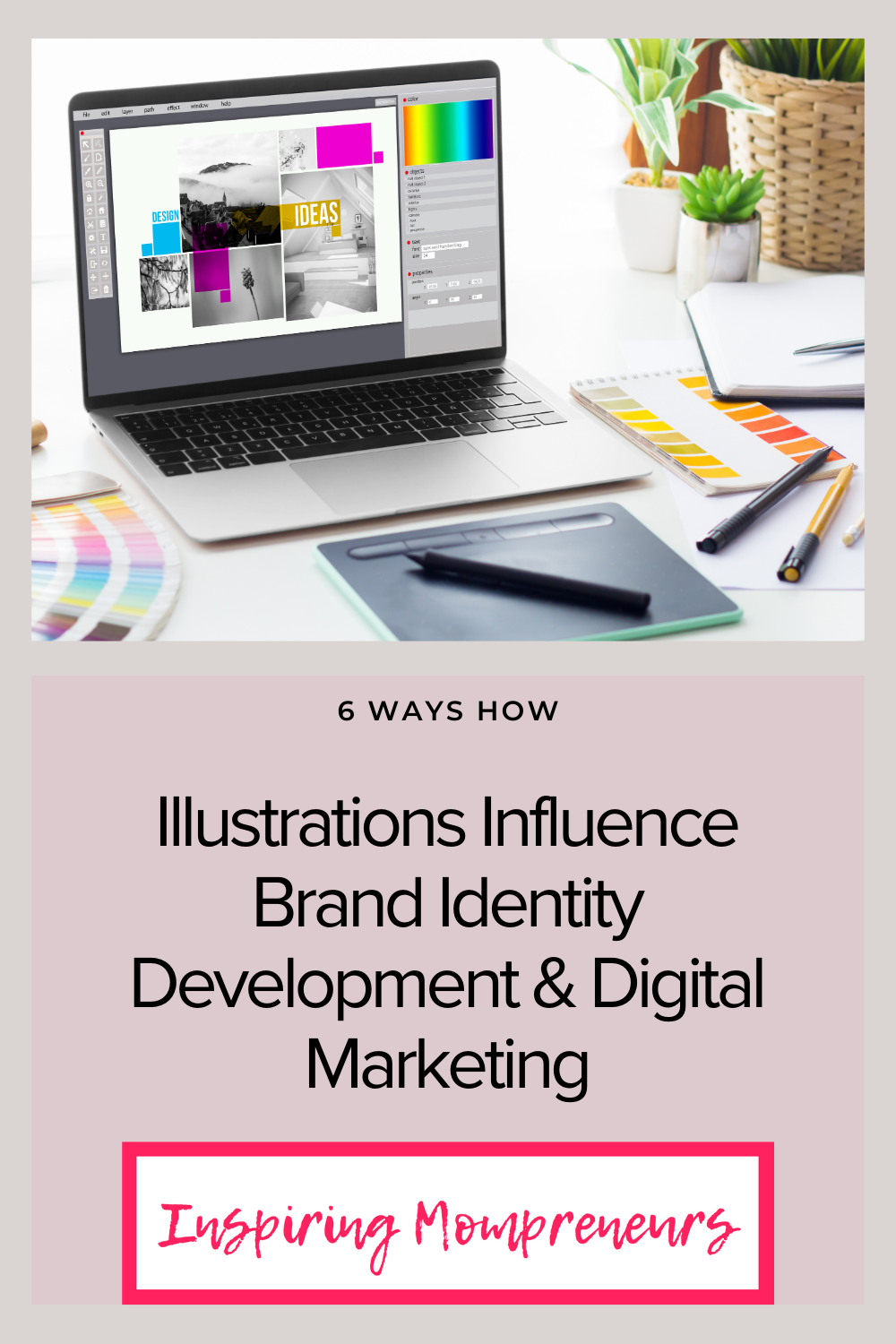How do illustrations influence brand identity development and digital marketing? In the world of digital marketing and branding, illustrations have proven to be a strong differentiator for businesses from competitors. They can do a lot more than be mere decorative elements; they can help create excitement, be a medium for messages, and etch a memorable image for a brand. This article elaborates on the ways illustrations help shape brand identity development and subsequently digital marketing strategies, helping companies carve unique spaces amid a multiplicity of chaos.
6 Ways Illustrations Influence Brand Identity Development and Digital Marketing

1. Creating a Unique Brand Personality
Illustrations are a very flexible medium through which it is possible to create a much more personalized brand identity concerning what the target consumers would want. Photography, with its reliance upon direct life, is restricted to what reality offers.
With graphics, one can experiment with various artistic styles, tones, and expressions. Playful, sophisticated, quirky, and professional are all illustrated to convey important personality traits. Recurrent styles and colors can lend to that unique self-identity feeling that seems personal.
For example, a tech startup might have sleek and minimalistic images suggesting innovation, while a children’s brand may go with bright and whimsical sketches to attract its younger audience.
2. Enhancing Brand Storytelling
Graphics enrich storytelling by providing visual narratives that make the written word more meaningful. Most brands using storytelling in their marketing rely on images to produce even more riveting representations of their stories. Examples of custom sketches include a company journey, customer testimonials, and even the conceptualization of an intricate idea in digestible formats.
The nature of the medium – the visual nature of illustration – reduces the time taken to understand the ideas, as well as adds depth to the message of the brand, making it more engaging. Putting this visual component in digital content will then enhance the level of integration of a brand’s storytelling efforts, making it easier for consumers to connect with the whole message.
3. Visual Appeal: Striking Images Capture Attention
Illustrations have an immediacy in grabbing the attention of the viewer. In a highly text-based world, images suddenly stand apart and then speak as if they drew attention. An outstanding illustration will pierce through the noise and draw the viewer to it, enlivening one’s imagination. Bright colors, interesting or unconventional designs, and clever visual storytelling can transcend stock images to fascinate audiences. Invest in unique Photoshop texture brushes that will allow you to create personalized, textured designs that can elevate your brand’s visual appeal. That attention-grabbing quality is especially important in digital marketing campaigns, where it is vital to stand out from the many things people are trying to engage with online.

4. Promoting Consistency Across Channels
Consistent identity is a hallmark of any good brand identity, and illustrations serve brands as an effective means of achieving that consistency. All the marketing platforms, whether you visit the brand’s website, their social media page, or their email campaigns, will speak the same consistent and relevant language for the visual imagery that highlights your identity.
Thus, through consistent graphic styles, businesses can render their identity instantly recognizable no matter where they are found under the sight of a customer. Digital marketing campaigns can bring unique and custom-made sketches into their realm such that the experience is solidified within these daily customer interactions and fine-tuned customer loyalty and trust.
5. Evoking Emotional Responses
Illustrated emotions cannot be represented by photography or other media. Most emotions, positive to negative, can be triggered with the aid of an emotion like excitement, calmness, nostalgia, depression, etc. This emotional link is much stronger in branding and marketing, and it drives consumer behaviors and strengthens brand loyalty.

For example, a soothing welfare brand usually prefers soft and subtle graphics with flowing shapes to create an emotional picture – a sense of calm and peacefulness – whereas, in an adventure brand, lively and energetic illustrations would work in imparting excitement. Careful choices with the respective emotional tone will allow brands to forge a connection with their audience on a deeper level.
6. Enhancing User Experience (UX) Design
Graphics are also an integral part of UX, or user experience design, in terms of digital interfaces like websites and apps. This can make for quite an intuitive and fun process guiding users through a company website. For example, people might understand what to do on a particular site using an animated icon or some fun illustrations that highlight features. With thoughtful design, images can help round out the overall user experience and provide a much more fun feel when interacting with a brand. In addition, UX sketches provide additional character and charm to a site or application, allowing it to be different from others, which can only apply utilizing the standard design elements.
Final Thoughts
Brand identity development and digital marketing practices in which illustrations are used are strong ways to differentiate a business from its competitors. Whether through grabbing attention or evoking emotions, graphics are versatile tools used to catch and cater to the specific needs of each brand. It now boils down to high-end, original illustration investments.
 About the Author
About the Author
Lana Hawkins is a stay-at-home mum by day and author by night. She is passionate about traveling, cooking and home decor.


